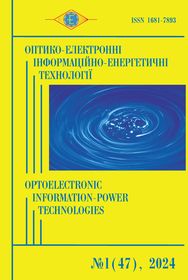Analysis of fundus images based on machine learning
DOI:
https://doi.org/10.31649/1681-7893-2024-47-1-140-147Keywords:
neural network, image preprocessing, convolutional neural network, diabetic retinopathyAbstract
In this work, a system for analyzing images of the fundus based on machine learning was developed. Extensive image pre-processing including adaptive binarization, CLAHE contrast enhancement, and morphological operations were used to improve the classification quality
References
Abràmoff, M. D., Lavin, P. T., Birch, M., Shah, N., & Folk, J. C. (2018). Pivotal trial of an autonomous AI-based diagnostic system for detection of diabetic retinopathy in primary care offices. npj Digital Medicine, 1(1), 1-8.
Gulshan, V., Peng, L., Coram, M., Stumpe, M. C., Wu, D., Narayanaswamy, A., & Webster, D. R. (2016). Development and validation of a deep learning algorithm for detection of diabetic retinopathy in retinal fundus photographs. JAMA, 316(22), 2402-2410.
Ting, D. S. W., Cheung, C. Y. L., Lim, G., Tan, G. S. W., Quang, N. D., Gan, A., ... & Wong, T. Y. (2017). Development and validation of a deep learning system for diabetic retinopathy and related eye diseases using retinal images from multiethnic populations with diabetes. JAMA, 318(22), 2211-2223.
Gargeya, R., & Leng, T. (2017). Automated identification of diabetic retinopathy using deep learning. Ophthalmology, 124(7), 962-969.
Bellemo, V., Lim, G., Rim, T. H., Tan, G. S. W., Cheung, C. Y., Sadda, S. R., ... & Ting, D. S. W. (2019). Artificial intelligence screening for diabetic retinopathy: the real-world emerging application. Current Diabetes Reports, 19(9), 1-7.
Yan, Q., Peng, Y., Shen, Y., Zhao, L., Cheng, Y., Zheng, F., ... & Wu, X. (2020). The global prevalence of diabetic retinopathy and its risk factors: a meta-analysis. Journal of Diabetes Research, 2020.
Wong, T. Y., Sun, J., Kawasaki, R., Ruamviboonsuk, P., Gupta, N., Lansingh, V. C., & Lamoureux, E. L. (2018). Guidelines on diabetic eye care: The International Council of Ophthalmology recommendations for screening, follow-up, referral, and treatment based on resource settings. Ophthalmology, 125(10), 1608-1622.
Diabetic Retinopathy Detection | Kaggle. https://www.kaggle.com/c/diabetic-retinopathy-detection/data.
Mamyrbayev, O., Pavlov, S., Karas, O., Saldan, Y., Momynzhanova, K., & Zhumagulova, S. (2024). Increasing the reliability of diagnosis of diabetic retinopathy based on machine learning. Eastern-European Journal of Enterprise Technologies, 2(9 (128), 17–26. https://doi.org/10.15587/1729-4061.2024.297849.
Pavlov S.V., Martianova T.A., Saldan Y.R., and etc., “Methods and computer tools for identifying diabetes-induced fundus pathology”, Information Technology in Medical Diagnostics II. CRC Press, Balkema book, Taylor & Francis Group, London, UK, 87-99, 2019.
SaldanYosyp, Sergii Pavlov, Vovkotrub Dina, Waldemar Wójcik, and etc., “Efficiency of optical-electronic systems: methods application for the analysis of structural changes in the process of eye grounds diagnosis,”, Proc. SPIE 10445, Photonics Applications in Astronomy, Communications, Industry, and High Energy Physics Experiments 2017, 104450S (2017).
Lytvynenko, V., Lurie, I., Voronenko, M., etc., “The use of Bayesian methods in the task of localizing the narcotic substances distribution,” International Scientific and Technical Conference on Computer Sciences and Information Technologies, 2, 8929835, 60–63 (2019).
Friedman, Jerome, Trevor Hastie, and Robert Tibshirani., “The elements of statistical learning,” hastie.su.domains/ElemStatLearn (2009).
Wójcik, W., Pavlov, S., Kalimoldayev, M. (2019). Information Technology in Medical Diagnostics II. London: Taylor & Francis Group, CRC Press, Balkema book. – 336 Pages, https://doi.org/10.1201/ 9780429057618. eBook ISBN 9780429057618.
Perspectives of the application of medical information technologies for assessing the risk of anatomical lesion of the coronary arteries / Pavlov S. V., Mezhiievska I. A., Wójcik W. [et al.]. Science, Technologies, Innovations. 2023. №1(25), 44-55 p.
Wójcik, W.; Mezhiievska, I.; Pavlov, S.V.; etc. Medical Fuzzy-Expert System for Assessment of the Degree of Anatomical Lesion of Coronary Arteries. Int. J. Environ. Res. Public Health 2023.
Downloads
-
pdf (Українська)
Downloads: 95
Published
How to Cite
Issue
Section
License
Автори, які публікуються у цьому журналі, погоджуються з наступними умовами:- Автори залишають за собою право на авторство своєї роботи та передають журналу право першої публікації цієї роботи на умовах ліцензії Creative Commons Attribution License, котра дозволяє іншим особам вільно розповсюджувати опубліковану роботу з обов'язковим посиланням на авторів оригінальної роботи та першу публікацію роботи у цьому журналі.
- Автори мають право укладати самостійні додаткові угоди щодо неексклюзивного розповсюдження роботи у тому вигляді, в якому вона була опублікована цим журналом (наприклад, розміщувати роботу в електронному сховищі установи або публікувати у складі монографії), за умови збереження посилання на першу публікацію роботи у цьому журналі.
- Політика журналу дозволяє і заохочує розміщення авторами в мережі Інтернет (наприклад, у сховищах установ або на особистих веб-сайтах) рукопису роботи, як до подання цього рукопису до редакції, так і під час його редакційного опрацювання, оскільки це сприяє виникненню продуктивної наукової дискусії та позитивно позначається на оперативності та динаміці цитування опублікованої роботи (див. The Effect of Open Access).


